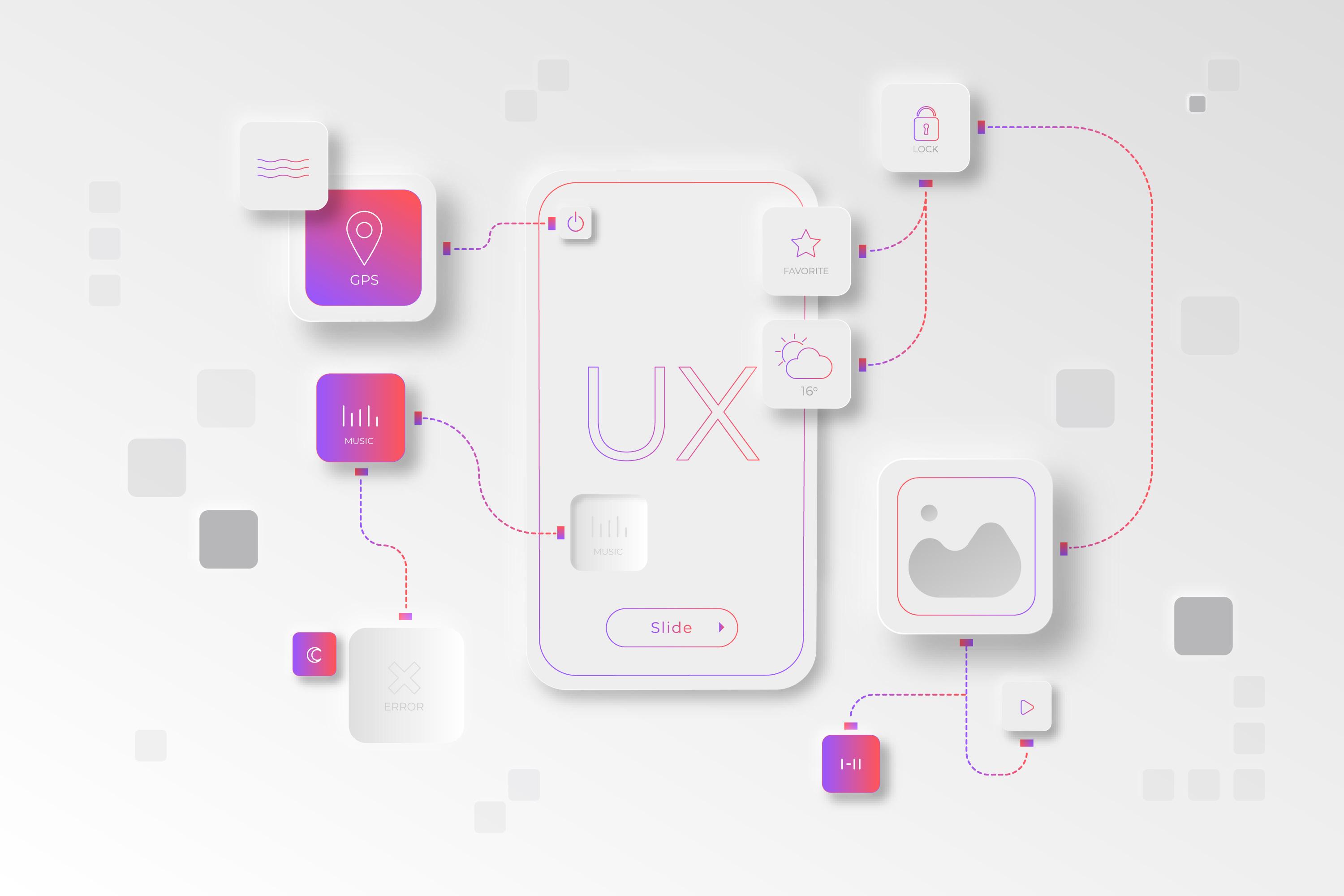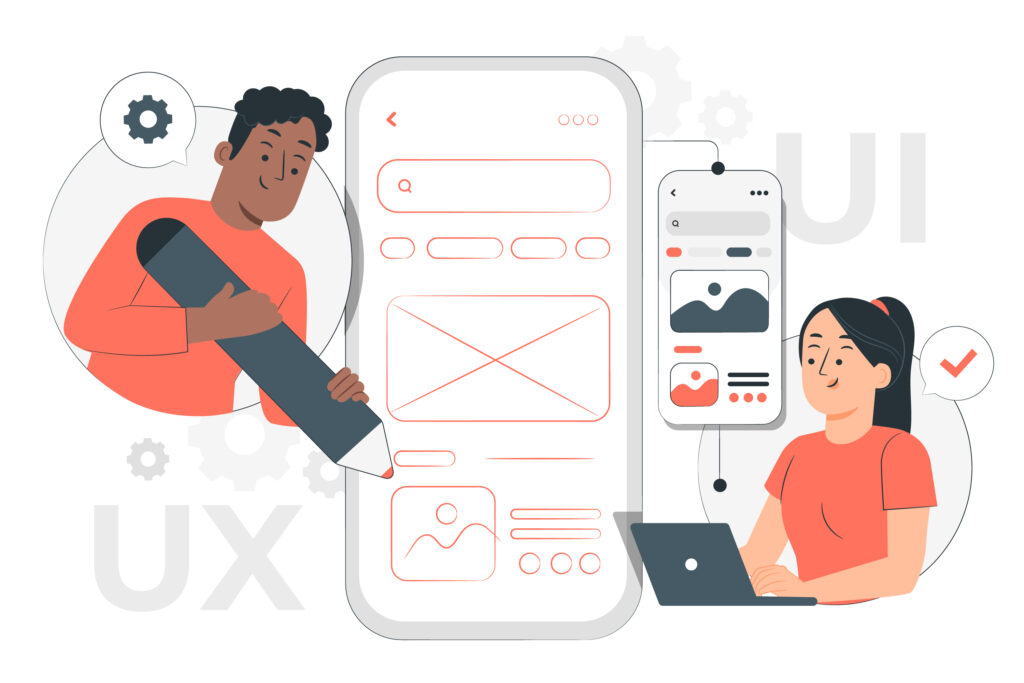(UI-UX Design) User experience (UX) and user interface (UI) design have become the key components of effective digital engagements in the constantly changing digital ecosystem. The combination of user interface and user experience design (UI/UX) may completely change how people use digital platforms, which is why it’s critical to the success or failure of any digital good or service. Understanding and utilizing the possibilities of UI-UX design is crucial for businesses looking to stay ahead of the curve in this age of fast technological innovation.

The Basis for Smooth Communication:
UI-UX design is fundamentally concerned with giving people a smooth and simple experience. The end-user’s journey is shaped by both the user interface, which includes the visual components of a digital platform, and the user experience, which includes total engagement and satisfaction. An aesthetically beautiful interface lowers friction and boosts engagement since it is the cornerstone of a user-friendly experience, not just something to look at.
Imagine a well-thought-out e-commerce website, with thoughtfully positioned user interface elements that seamlessly lead customers from product discovery to checkout. The user experience (UX) component makes sure that everything works smoothly, with simple navigation and minimalist design making for a productive and pleasurable purchasing experience. Digital interactions are made seamless and engaging by this well-balanced combination of UI and UX features.

Improving Trust and Perception of the Brand:
The way UI-UX design is implemented is crucial in determining how consumers view a brand. Users are given trust by an interface that is well-designed since it conveys professionalism, dependability, and attention to detail. Maintaining consistency in design components across many platforms and devices promotes brand identification, which in turn enhances reliability and trustworthiness.
An example of a banking software that conveys security and dependability is one that has a simple, easy-to-use user interface (UI) and a seamless user experience (UX). Consumers are more likely to put their trust in a platform that looks good and works well, as this guarantees a satisfying experience with the brand.

Customization and Design with the User in Mind:
A focus on user-centricity is one of the most important components of good UI-UX design. In order to customize the design and provide a personalized experience, it is imperative to comprehend the needs, tastes, and behaviors of the target audience. Users feel appreciated and understood when they are provided with a sense of customized attention, which is enhanced by features like user-specific information, adaptable interfaces, and tailored recommendations.
Take into account the popularity of streaming services that combine UI/UX design with user viewing history to produce personalized content suggestions. These platforms build a devoted user base by predicting user preferences and presenting material in an engaging way that keeps users coming back for more.
Putting Mobile First and Using Responsive Design:
It is now essential for UI-UX designers to prioritize mobile devices in their designs due to the growing popularity of mobile devices. Digital interfaces that are responsively designed may easily adjust to a range of screen sizes, offering a unified and optimum user experience across multiple platforms. This strategy helps with search engine optimization as well as user diversity, since search engines give preference to websites that are mobile-friendly.
Consider a news app that moves from a desktop screen to a mobile one without any problems, retaining readability and usefulness. This flexibility guarantees that consumers, whichever device they are using, can easily access content, improving the user experience all around.

Constant Enhancement via User Input:
User feedback is essential to the iterative process of UI-UX design. In order to ensure that the digital experience adapts to evolving user expectations, designers can make well-informed adjustments by analyzing user behavior, preferences, and pain areas.
For example, social media sites frequently roll out new features in response to consumer input and usage trends. In addition to maintaining user engagement, this ongoing development shows a dedication to improving the user experience and upholds the platform’s relevancy in a cutthroat market.
Conclusion: Elevating Digital Experiences through UI-UX Design:
With so many options and short attention spans in the digital age, UI-UX design is crucial to producing memorable and significant digital interactions. Because of its ability to build trust, combine style and utility with ease, and adjust to user needs, UI-UX design is considered the most important component in determining the success of digital goods and services. Businesses are transforming the way we engage with the digital world by recognizing and utilizing the potential of great UI-UX design, and by exceeding user expectations in the process. Best UI-UX Design Course provided by Brilliko Institute of Multimedia.




